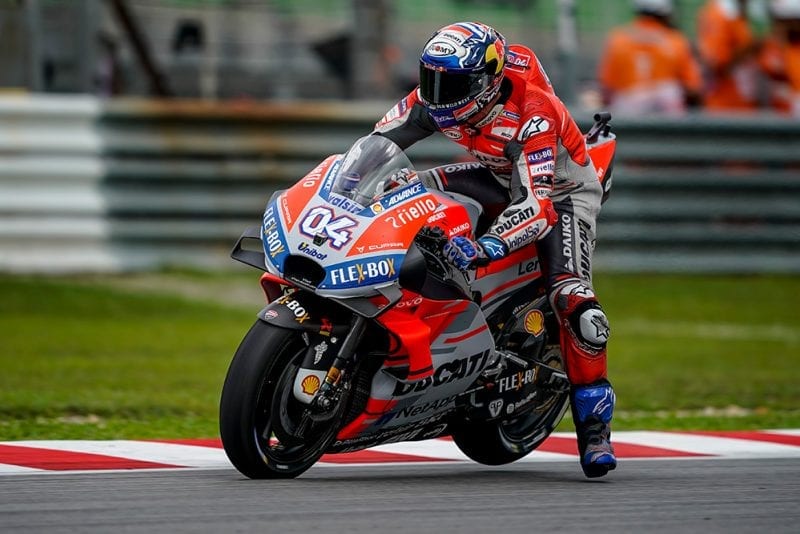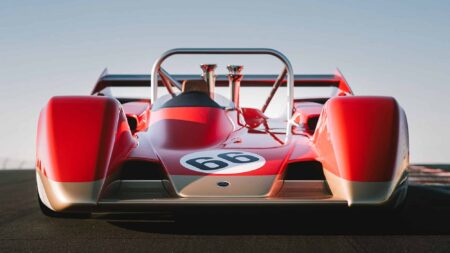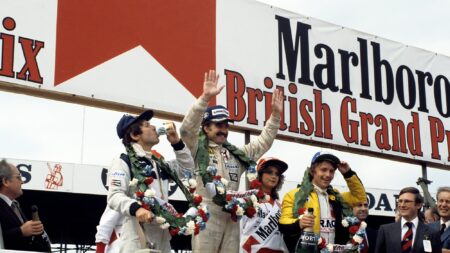
Ayrton Senna's final F1 win: 'I could see the emotion in his eyes'
Ayrton Senna's last F1 win was delivered in some style – his McLaren team manager and close friend Jo Ramirez recalls the heady day to James Elson

Dovizioso finished runner-up to Marc Márquez in 2017 and 2018, so how does the rider counter the skills of his greatest rival?
How has riding technique changed since you came to MotoGP in 2008?
Riding technique has changed a lot. The bikes have changed a lot and the intensity we are able to put into the bike has changed a lot, so you need to be much fitter because to be fast for 45 minutes with such a level of intensity is impossible if you are not very, very fit. This is the first thing, the second thing is the electronics. The electronics have changed a lot: they are much better and the way we manage them is much better; this is the biggest change and it affects our riding style.
Also, the racing has changed because there are a lot of good riders that are close to the fastest riders.
Tyres also have a big effect on riding technique and how you set up the bike, so how has the change from Bridgestone to Michelin changed things?
It’s not about whether the tyres are better or worse, it’s not about this company is better or worse; it’s just a different way to ride. If you look at the lap times, sometimes we are faster with the Bridgestones and sometimes with the Michelins. So we can’t speak about better or worse; it’s just different. When there is such a change I think it’s not important if it’s better or worse, because these are the rules and everyone has to adapt, so it’s just about the difference.
With the Michelins, small things can have a big effect. So sometimes riders and teams lose their way, even though the answer is very close. Most of the time it’s difficult to understand what you have to do and often I hear riders say things like, ‘we are completely in the shit, this is impossible,’ but I don’t think this is the reality. It’s just your feeling that everything is very bad, but in fact the answer is very close. This is the characteristic of these tyres – with Bridgestones it was completely different.
I’ve not changed much. But look at my results!
How does the change of tyre brands affect the way you attack a corner?
With both brands the way I approach a corner is very similar. And if I was good at using the Bridgestones then I’m better at using the Michelins. The difference with the Michelins is that a lot of riders start to feel the limit when they lock the front tyre when braking at the end of a straight, which was impossible with the Bridgestone. This is something that not many riders had ever felt before.
So you have to be very sensitive with the front brake and tyre?
Yes. You try not to lose grip and you try to be fast in a safe way. I can’t load the front tyre like I loaded the Bridgestone, but I can load the tyre more than the other riders. I am a hard braker and if you are hard braker you normally play with front grip more than your competitors, so you feel more feedback from the front, so you learn how to manage that. With the Michelin you do all your braking when you’re straight.
The big difference with these tyres is that you must be very soft and very slow with all your movements. For example, if you’re very hard on the front tyre all the way to the middle of the corner then you must be very, very, very slow when you release the brake, turn the bike and open the throttle, because the change between loading the tyres and unloading the tyres is very bad with the Michelins.
So you have to let the tyre return to its normal shape slowly?
Yes, more slowly than with the Bridgestones. The other big difference between the tyres is that with the Bridgestones you had to use the front tyre to do everything, because there wasn’t a lot of rear grip. But with the Michelins you have to do everything with the rear – you have to use the rear more than the front for braking, turning and acceleration.
Related:
Do you always have to save the rear tyre in the race?
I just learn day by day with the Michelins because every time you ride the bike you learn something. During 2017 we understood how to manage the rear tyre and that was one of the keys of my 2017 results. Now everyone is fast, a minimum of 10 riders can make the same lap time, but this is not the way to win races in MotoGP. The way to win races is different now and it’s not always the same story: sometimes you have to save the tyres from the start of the race, sometimes you can push harder from the start. Every time it’s different; it depends on which tyres Michelin bring.
After the first few races of 2018 you said Michelin’s rear slick had changed – how?
I think the rear grip is a bit worse than last year, but when you slide on entry or exit the slides are more linear – so it’s positives and negatives. We have to adapt like always; this is our sport. You have to adapt the way you use the front brake, how you use the rear brake, your lines and so on. Everything changes every time. This is our work – trying to understand what you need, so you can try to use the maximum potential of the bike and the tyres.
At some tracks you can’t use the best potential of the rear tyre because if you enter and exit the corners with full force you won’t have enough tyre to finish the race, so you can’t open the throttle when you want, you have to wait to open the throttle… The difference is very small. But when you are on the limit, small things can be big things.
Do you know where you are before the race, maybe from FP4?
You never have the perfect feeling, so you use the feedback from the tyres to tell you if it’s better to do this or that. But during the race it’s almost impossible to understand your situation and if you arrive at that limit, when the tyre is almost finished, you are f**ked.
Do you prefer this kind of racing – with the Michelins and the lower-tech unified software – because you are more of a thinking rider?
Yes, I prefer it like this. But it’s not just about this. In MotoGP every rider is really, really fast, but less than half the grid is able to be fast and save the tyres. That’s a huge difference.
How has your body position changed over the years?
Not so much – maybe I have changed my position on the bike less than the others. But this is something I’m always working on, even though I’ve not changed much. But look at my results!
If you look at the physics of racing and if you look at the riding style of all the young riders, like Marc and the Moto3 riders, it might seem that you cannot be fast unless you ride like they do. But in the end, it’s not like that. I think you can have some advantages if you ride like that, but I don’t think the same way that most people think about that. I think about this and I work on it a lot, but in the end I understood this isn’t the point. Yes, everything is important, so every rider tries to improve in every area.
More: Dovizioso and Giribuola: MotoGP’s best pitlane partnership?
More and more riders lean off more with the upper body to help turning, but this can cause problems because if you’re like that you can’t lift up the bike?
No, this isn’t true. Normally when you are more out of the bike the bike is more up, so this is positive.
Do you lean off more than you did?
Not so much. I tried, and I worked a lot on this, but it was very different for me to change the way I use my arms to get the right leverage on the handlebars
Has the change of tyres changed the way the bike transfers load from front to rear and rear to front?
Yes. With the Michelins you rarely see the rear tyre in the air during braking, but with the Bridgestones everybody lifted the rear on the brakes. This is because with Bridgestone it wasn’t important to keep the rear on the asphalt because the rear didn’t have the grip to help you to stop. With the Michelins you have to use the rear grip during braking.
What about fighting with other riders – how has that changed with the change of tyres?
It’s a bit more difficult. For example, it’s more difficult in braking because everyone arrives at the limit of the front tyre quite easily. This means you can’t make a big difference over your rivals during braking because you’re all at the limit of grip. You have less margin to play with, so you can’t take risks. It’s very difficult to make it happen.
On the other hand, you have good grip in the middle of the corner, so you can prepare the exit in a better way than you could with the Bridgestones, so during the exit you are already getting in the right position to overtake the other rider.
So you start making the move at the corner before you actually make the pass?
Yes. You have more grip than before at high lean angles, so you can gain more time on the exit to be closer to the other guy when you brake for the next corner.

Ayrton Senna's last F1 win was delivered in some style – his McLaren team manager and close friend Jo Ramirez recalls the heady day to James Elson

Colin Chapman's stunning Lotus Type 66 Can-Am design lay rolled up in a draw for over 50 years – James Elson speaks to the people who brought it to life in 2023

F1 Retro
Chris Amon was one of the most naturally gifted drivers F1 has ever seen – Mark Hughes remembers a man who deserved much more, but never looked back in bitterness

He preferred Brands Hatch and wasn't impressed by the race, but Matt Bishop was still at Silverstone in 1979 to witness history at the British Grand Prix: the final hurrah of one F1 winner, and the first for a budding legend of the sport